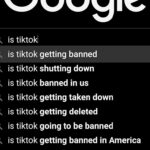User-generated content (UGC) has become a powerful tool for businesses looking to engage with their audience and build brand awareness. UGC rate sheets are essential for determining creator compensation and ensuring fair rates for the content produced. These rate sheets outline the compensation structure for creators based on various factors such as reach, engagement, and content quality.
When it comes to UGC rate sheets, it’s important to understand the different compensation models that are commonly used. One common model is the pay-per-post model, where creators are compensated based on the number of posts they create for a brand. Another model is the pay-per-engagement model, where creators are compensated based on the level of engagement their content generates. Additionally, some rate sheets may include bonuses or incentives for creators who meet certain performance metrics.
It’s also important to consider the various factors that can influence creator compensation. These factors may include the creator’s reach and audience size, their level of engagement, the quality of their content, and their industry expertise. By understanding these factors, businesses can create fair and competitive rate sheets that incentivize creators to produce high-quality content while also ensuring that they are fairly compensated for their work.
Navigating UGC Rate Sheets for SaaS Marketing: Tips for Determining Creator Compensation
When it comes to SaaS marketing, UGC rate sheets play a crucial role in determining creator compensation. SaaS companies often rely on UGC to showcase their products and services in an authentic and relatable way. As such, it’s important for SaaS businesses to carefully consider how they compensate creators for their UGC efforts.
One tip for determining creator compensation in SaaS marketing is to consider the value that UGC brings to the business. UGC can help SaaS companies build trust with their audience, increase brand awareness, and drive conversions. As such, it’s important to compensate creators fairly for the value that their content brings to the business.
Another tip is to consider the specific goals of the UGC campaign when determining creator compensation. For example, if the goal of the campaign is to drive conversions, it may be beneficial to compensate creators based on the performance of their content. On the other hand, if the goal is to increase brand awareness, compensating creators based on reach and engagement may be more appropriate.
It’s also important for SaaS businesses to consider the competitive landscape when determining creator compensation. By understanding what other businesses are offering creators in terms of compensation, SaaS companies can ensure that their rate sheets are competitive and attractive to potential creators.
Startup Marketing and UGC Rate Sheets: How to Strategically Allocate Budget for Influencer Compensation
For startups, UGC rate sheets play a critical role in strategically allocating budget for influencer compensation. Startups often have limited resources, so it’s important to carefully consider how budget is allocated for influencer compensation to ensure that it is used effectively and efficiently.
One strategy for strategically allocating budget for influencer compensation is to prioritize creators who align with the startup’s target audience and brand values. By working with creators who have a genuine connection with the startup’s audience, startups can maximize the impact of their UGC campaigns and ensure that their budget is used effectively.
Another strategy is to consider the potential return on investment (ROI) of working with different creators when allocating budget for influencer compensation. By analyzing factors such as reach, engagement, and conversion rates, startups can identify creators who are likely to deliver a strong ROI and allocate budget accordingly.
It’s also important for startups to be flexible and open to negotiation when it comes to influencer compensation. By being open to negotiation, startups can build strong relationships with creators and potentially secure more favorable rates that align with their budget constraints.
Influencer List: Identifying the Right Creators for Your UGC Campaigns
When it comes to building an influencer list for UGC campaigns, it’s important to carefully identify the right creators who align with your brand and campaign goals. The right creators can help amplify your message and connect with your target audience in an authentic and impactful way.
One key factor to consider when identifying creators for your influencer list is their relevance to your target audience. It’s important to work with creators who have a genuine connection with your audience and can effectively communicate your brand message in a way that resonates with their followers.
Another factor to consider is the creator’s content quality and style. It’s important to review the creator’s past content to ensure that it aligns with your brand’s aesthetic and messaging. Additionally, considering the creator’s engagement rates and audience demographics can help ensure that they are a good fit for your UGC campaign.
It’s also important to consider the creator’s industry expertise and credibility when building an influencer list. Working with creators who are respected and knowledgeable in your industry can help lend credibility to your brand and UGC campaigns.
Negotiating Creator Compensation: Best Practices for Ensuring Fair Rates and Quality Content
Negotiating creator compensation is an important aspect of building successful UGC campaigns. By following best practices for negotiation, businesses can ensure that they secure fair rates while also maintaining a positive relationship with creators and ensuring the delivery of quality content.
One best practice for negotiating creator compensation is to clearly communicate expectations and deliverables from the outset. By outlining what is expected from the creator in terms of content quality, posting frequency, and performance metrics, businesses can set clear parameters for compensation negotiations.
Another best practice is to be transparent about budget constraints while also emphasizing the value that the creator will bring to the campaign. By being open about budget limitations, businesses can work collaboratively with creators to find a compensation structure that works for both parties while also emphasizing the potential impact of the creator’s content on the campaign’s success.
It’s also important to be open to compromise during negotiation. By being flexible and willing to find common ground, businesses can build strong relationships with creators and potentially secure more favorable rates while also ensuring that both parties are satisfied with the terms of the agreement.
Measuring ROI on UGC Campaigns: Analyzing the Impact of Creator Compensation on Marketing Success
Measuring return on investment (ROI) on UGC campaigns is essential for analyzing the impact of creator compensation on marketing success. By understanding the ROI of UGC campaigns, businesses can assess the effectiveness of their creator compensation strategies and make informed decisions about future campaigns.
One key metric for measuring ROI on UGC campaigns is conversion rates. By analyzing how creator-generated content impacts conversion rates, businesses can determine the effectiveness of their creator compensation strategies in driving sales and revenue.
Another important metric is engagement rates. By assessing how creator-generated content performs in terms of likes, comments, shares, and other engagement metrics, businesses can gauge the impact of their creator compensation strategies on audience interaction and brand awareness.
It’s also important to consider overall brand sentiment and perception when measuring ROI on UGC campaigns. By analyzing how creator-generated content influences brand sentiment and perception among consumers, businesses can gain insights into the long-term impact of their creator compensation strategies on brand equity and customer loyalty.
Evolving Trends in UGC Rate Sheets: Adapting to Changes in Creator Compensation Models
| Metrics | 2019 | 2020 | 2021 |
|---|---|---|---|
| UGC Rate Sheets | Standardized | Variable | Customized |
| Creator Compensation | Fixed | Performance-based | Hybrid |
| Engagement Metrics | Likes, Comments | Engagement Rate | Conversion Rate |
| Platform Changes | Minimal | Algorithm Updates | Monetization Features |
As the landscape of influencer marketing continues to evolve, businesses must adapt to changes in creator compensation models when developing UGC rate sheets. By staying abreast of evolving trends in creator compensation, businesses can ensure that their rate sheets remain competitive and attractive to potential creators.
One evolving trend in creator compensation models is the shift towards performance-based compensation. Rather than compensating creators based on reach or posting frequency alone, businesses are increasingly looking at performance metrics such as engagement rates, click-through rates, and conversion rates when determining creator compensation.
Another trend is the rise of long-term partnerships between brands and creators. Rather than one-off collaborations, businesses are increasingly seeking to establish ongoing relationships with creators, which may involve retainer-based compensation models or revenue-sharing arrangements.
It’s also important for businesses to consider emerging platforms and formats when adapting their UGC rate sheets. With the rise of new social media platforms and content formats such as short-form video and live streaming, businesses must be open to adjusting their rate sheets to accommodate these new opportunities for creator collaboration.
In conclusion, UGC rate sheets play a crucial role in determining fair compensation for creators while also ensuring that businesses achieve their marketing goals. By understanding the various factors that influence creator compensation, businesses can develop competitive rate sheets that incentivize high-quality content production. Additionally, by staying abreast of evolving trends in creator compensation models and adapting their rate sheets accordingly, businesses can remain competitive in the ever-changing landscape of influencer marketing.
FAQs
What is UGC?
UGC stands for User-Generated Content, which refers to any form of content, such as videos, photos, reviews, or social media posts, that is created by users or consumers rather than by a brand or professional content creator.
What are UGC rate sheets?
UGC rate sheets are documents that outline the compensation or payment structure for creators of user-generated content. These rate sheets detail the fees, royalties, or other forms of compensation that creators can expect to receive for their content.
How are creators compensated for UGC?
Creators of user-generated content can be compensated in various ways, including flat fees, royalties based on usage or views, product samples or discounts, or a combination of these methods. The compensation structure is typically outlined in the UGC rate sheet.
Why is it important to understand UGC rate sheets?
Understanding UGC rate sheets is important for both creators and brands. Creators need to know how they will be compensated for their content, while brands need to ensure they are offering fair and competitive compensation to attract and retain talented creators.
What factors can influence creator compensation for UGC?
Factors that can influence creator compensation for user-generated content include the creator’s level of experience and influence, the quality and uniqueness of their content, the intended usage or distribution of the content, and the brand’s budget and marketing goals.
How can creators negotiate their compensation for UGC?
Creators can negotiate their compensation for user-generated content by demonstrating the value of their content, understanding industry standards for compensation, and being willing to discuss and compromise on terms that are mutually beneficial for both the creator and the brand.















